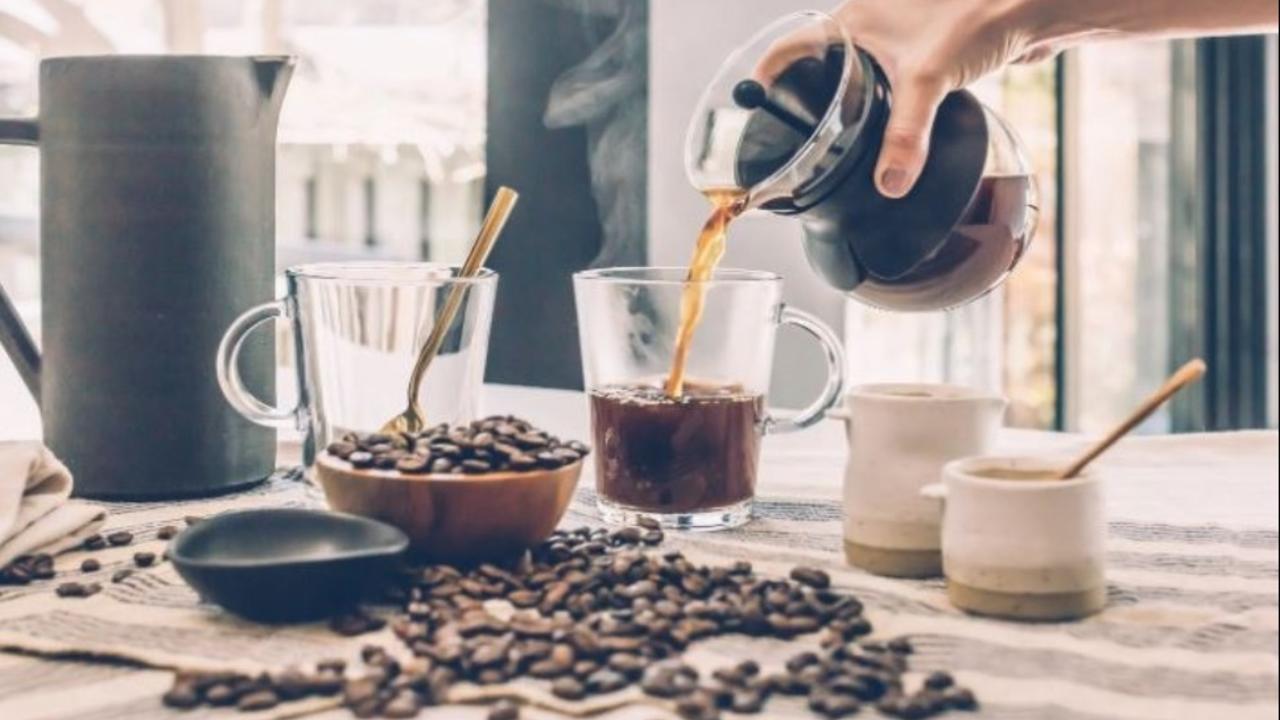Trying to do 'Dry January' but your friends are suggesting a wine tasting night? It's a nightmare scenario, we know. But there is an alternative! Enter... coffee cupping.
Cupping coffee is the best way to truly appreciate this delicious drink. Whether you're observing, sniffing or slurping, it's a fully interactive experience and great fun alongside some caffeine-loving friends.
What is coffee cupping?
Coffee cupping is the art of tasting coffee. By brewing and tasting the coffee in this unique manner, the true character, flavours and notes are released and experienced.
The process involves observing, smelling and sampling the coffee, offering a well-rounded experience, and many different sides can be discovered through this method.
What you need to cup coffee

-
Coffee beans or ground coffee - 12g of coffee grounds per cup
-
Water - 200ml per cup. Preferably, fresh, soft water
-
Kettle
-
Coffee grinder
-
Scales
- Tasting cups - can be official coffee cupping bowls or standard coffee cups, both work
-
Rinsing cup
-
Spoons - any spoon with a wide, rounded head like a soup spoon is perfect
A guide to coffee cupping in 7 steps
Here's our easy seven-step guide on how to cup coffee like a professional...
Step 1 - Grinding the coffee beans

Grind the coffee beans on a coarse grind and place them into a cup. For each different set of coffee grounds, use a different cup. Each coffee requires 12g of ground coffee beans.
Most often, around five different coffees are tasted when cupping coffee. However, as little as two different coffees can be cupped with.
Step 2 - Smelling the coffee

Smell the ground coffee. Once the coffee bean is ground down, it will release lots of beautiful aromas. Even at this stage, the coffee bean will give you hints about its character and profile.
Step 3 - Brewing the coffee

Next, pour in 200ml of hot water into each cup of coffee. Let it steep for around 4 minutes, without stirring.
When pouring, try to agitate the coffee grounds by pouring heavily onto the coffee grounds. More flavours will be released because of this.
Step 4 - Smelling the brew

Whilst the coffee grounds are brewing, this is another chance to smell the coffee. See how the coffee has changed and what new flavours are standing out.
Step 5 - Stirring the coffee

Now, once the 4 minutes are up, stir the coffee. Stirring should be done with downwards sweeping motions, forcing the floating coffee grounds to the bottom of the cup. Leave this for 10 more minutes.
Smell whilst doing this, as you'll be breaking the crust that forms on top of each cup. Make sure to clean your spoon after each coffee.
Step 6 - Skimming the coffee brew

Before tasting, you'll need to break the crust and skim it off. This is easily done using two spoons and collecting the grounds slowly.
Step 7 - Tasting the brewed coffee

Now, you can taste the coffee (finally)! After this long cupping process, the coffee is cool enough to drink, fully experiencing its flavours.
Tasting is done through slurping off of a spoon. Take the spoon and scoop up a bit of the coffee. Then, slurp it quickly into your mouth. The idea, here, is to spray the coffee all over your palette. Then spit it out.
This step should be repeated until the coffee reaches room temperature. Over time, you'll be able to pick up every aspect of the coffee sample.
How to taste coffee

Tasting coffee might seem like a long-winded and complicated affair, and it also attracts snobby types that like to utilise their inner thesaurus while describing it. However, there are only four aspects to keep in mind when cupping coffee - acidity, sweetness, body and finish.
And here's a super simple guide to what they each mean...
Acidity
These are the notes that make your tongue 'zing'. Acidity can be good or bad, depending on intensity and personal preference. Good acidity is regarded as light, fresh and crisp rather than a harsh, sour espresso.
Sweetness
It's easy to think about conventional sweetness, like sugar, but try not to! Coffee sweetness is very unique and hard to put your finger on. Ripe coffee beans with good processing and roasting produce sweeter notes. Finding the sweetness in a coffee can take a few sips and spits.
Body
This is the feeling of the coffee in your mouth and plays a huge role in what makes coffee enjoyable or not. Is it light or heavy? Does it feel silky? Different methods of brewing coffee produce different results for the coffee's body and cupping is the only way to experience it.
Finish
The finish refers to the coffee's aftertaste. A good coffee has a smooth flavour that lingers. Consequently, many find the finish to be the best part of the coffee, and really like to savour it. Take a moment to consider the aftertaste when you cup coffees.
Coffee flavours

For those enjoying a good cupping, discovering the flavours can be the best part - just like tasting wine. How the flavour develops is all down to the coffee roasting process and how coffee roasters want their beans to be.
Because of this, there are a whole host of potential flavours to be discovered. Coffee expert, James Hoffman believes there are two main groups of flavours, fruit and caramelised foods. And from these, it's possible to explore even more flavours:
Fruit
This group can be further split into three more categories, berries, conservative products and tropical. This means it's possible to detect a hint of blackberries or strawberry jam or even mango in your morning brew. If you've got more of a bitter palate, you'll probably favour fruity coffees over other ones.
Caramelised foods
This is a much wider and varied flavour group. Everything from caramel, toffee, toast, biscuits and chocolate are included. And, if you haven't noticed yet, it doesn't actually need to be caramelised to put into this category. Misleading (we know) but as long as it's sweet, nutty, buttery, creamy or roasted in taste, it will be included! Most people will prefer these flavours over the fruit flavours, due to their sweeter notes.
When tasting coffee, you can also use a flavour wheel. This is a colourful tool that can help you discover the notes, and although it isn't a necessity, if you're a coffee cupping newbie, it can help you understand how flavours relate to each other, plus develop your palette.
Why do people cup coffee?

Coffee cupping is done to discover the flavours, characteristics and quality of a coffee. Coffee cuppers are looking into aspects like mouthfeel, sweetness, acidity and balance, to name a few.
Cupping coffee is a very common practice in the coffee industry. Baristas, coffee roasters and quality control specialists all use coffee cupping for their different needs. However, we fully endorse a casual cupping for fun!
Just can't get enough of coffee? Refine your coffee knowledge at one of our barista schools and learn from our top expert baristas.

